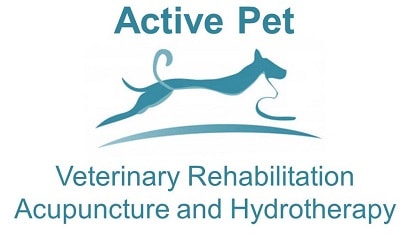 It is strange how rehabilitation is a relatively new field in Veterinary Medicine but has been around for many years in the human field. Doctors will often refer patients for physiotherapy straight after surgery or to see if they can try to avoid sending their patients ‘under the knife’ but the veterinary field has been a little slow to catch up. For instance many vets used to (and some still do) recommend sending their patients home with several weeks of cage rest after operations, only allowing them out for toilet trips on the lead. This leads to patient boredom, owner frustration and can lead to muscle wastage and everything stiffening up, both of the area affected and the rest of the body. There are some cases where a certain area needs to have restricted exercise/movement to allow it to heal but it is important to consider what happens to the rest of the body when it is not moving, think how stiff you’d get if you sat in a chair all day and didn’t move about.
It is strange how rehabilitation is a relatively new field in Veterinary Medicine but has been around for many years in the human field. Doctors will often refer patients for physiotherapy straight after surgery or to see if they can try to avoid sending their patients ‘under the knife’ but the veterinary field has been a little slow to catch up. For instance many vets used to (and some still do) recommend sending their patients home with several weeks of cage rest after operations, only allowing them out for toilet trips on the lead. This leads to patient boredom, owner frustration and can lead to muscle wastage and everything stiffening up, both of the area affected and the rest of the body. There are some cases where a certain area needs to have restricted exercise/movement to allow it to heal but it is important to consider what happens to the rest of the body when it is not moving, think how stiff you’d get if you sat in a chair all day and didn’t move about.
Luckily this is now changing, though we still have to extrapolate much of the research from humans as there are few animal specific studies to rely on. One interesting paper which you can find here is a small study from 2006 where they took two groups of dogs who had damaged the cruciate ligament in one of their hindlimbs. Both groups had the same surgery but one group had hydrotherapy and physiotherapy and the other group were only given lead walks. Before surgery the researchers measured the muscle difference of the thighs in both groups and found that in both groups the injured leg had less muscle compared to the normal one. 6 weeks after surgery they found that there was no muscle difference between the thighs in the group that had received physiotherapy and hydrotherapy, meaning that the muscle had built back up, whereas there was still a marked difference in thigh muscle in the lead-walking only group. The researchers also found that in the lead exercise only group the dogs were not able to bend and stretch the affected knee as much as it had stiffened up.
Although only a small study this does go to illustrate the benefits of rehabilitation and starting it as soon as possible. It is certainly much harder to try and build up muscle and joint flexibility several weeks after surgery, compared to starting straightaway. In the human field people who had hip replacements used to be prescribed several weeks of bed rest, nowadays the physiotherapists will be getting them up and walking the day after surgery because they have found that this produces the best results and outcome for the patient.
Hopefully as more veterinary specific research comes out and more vets come to understand and see the benefits of early rehabilitation, lots of our pets will be able to reap the benefits of this knowledge and go back to leading full and active lives!

